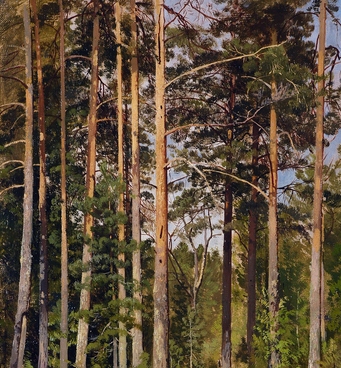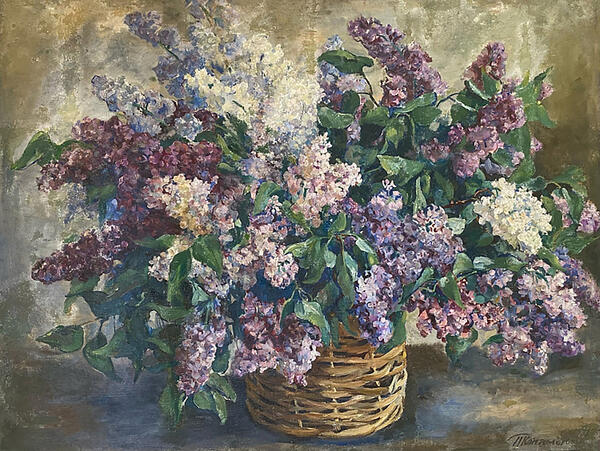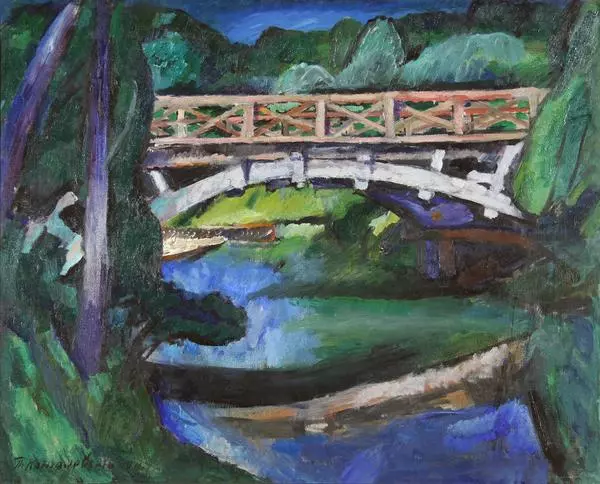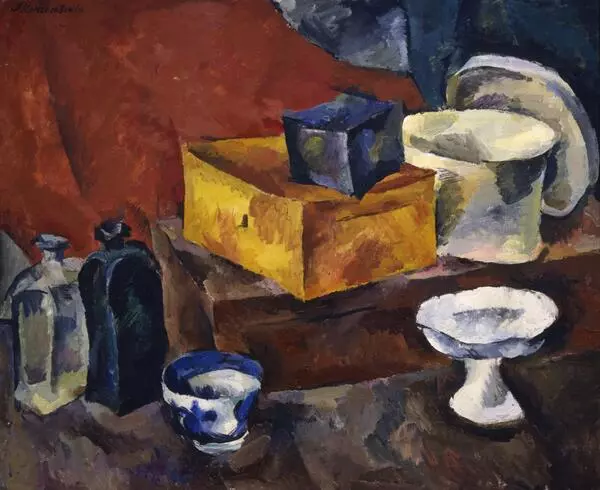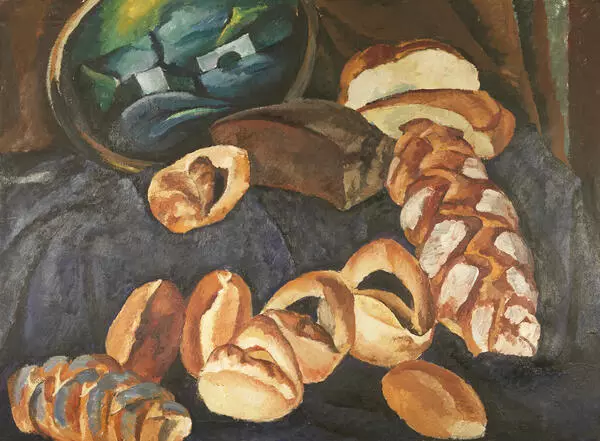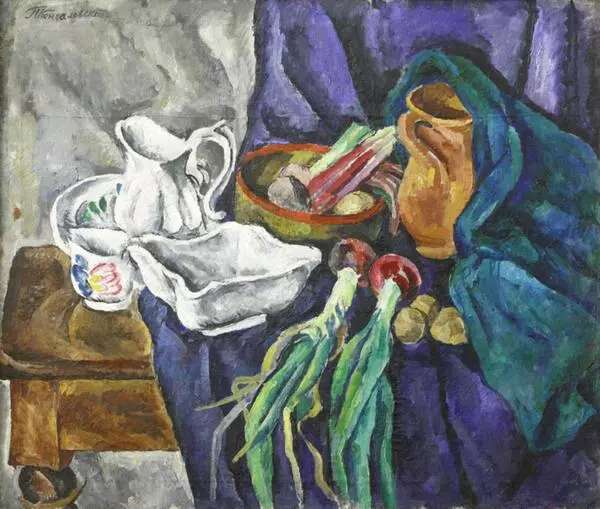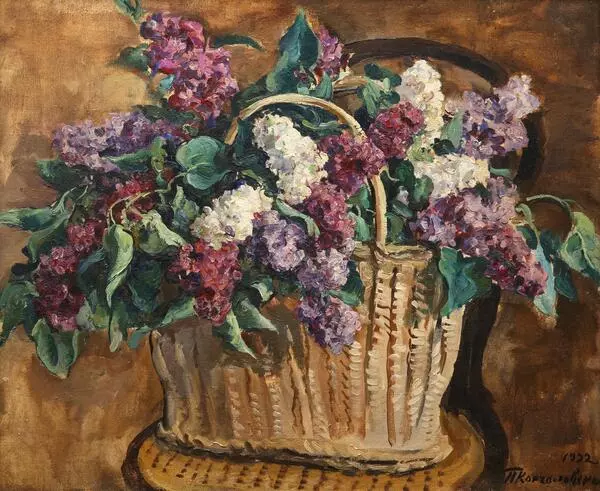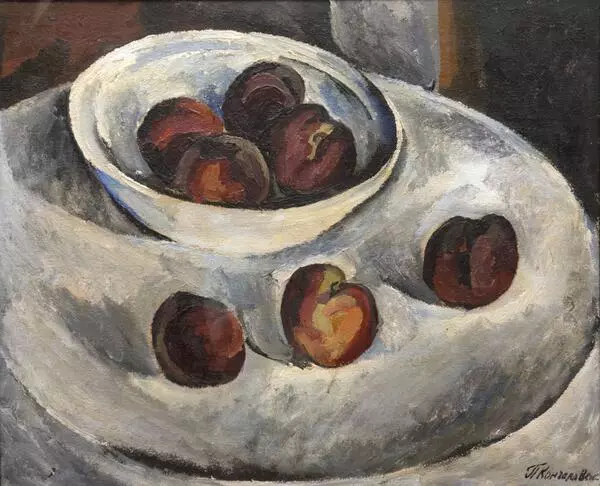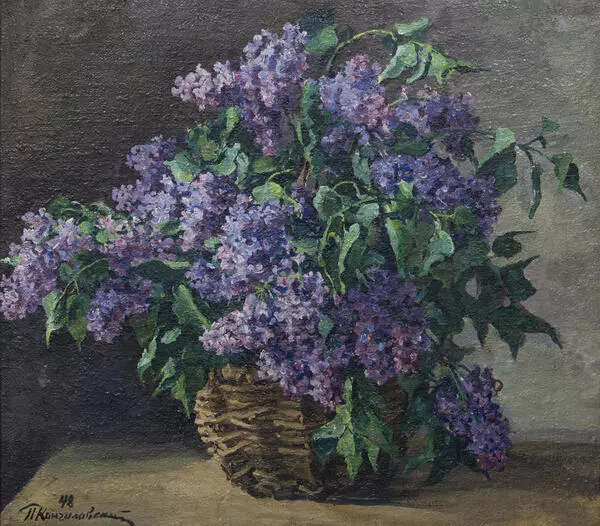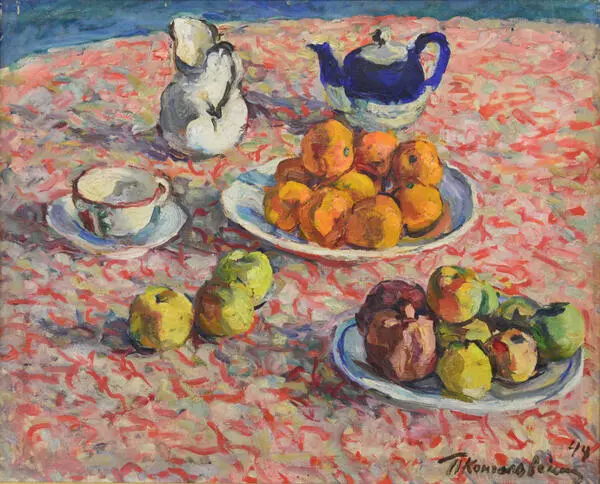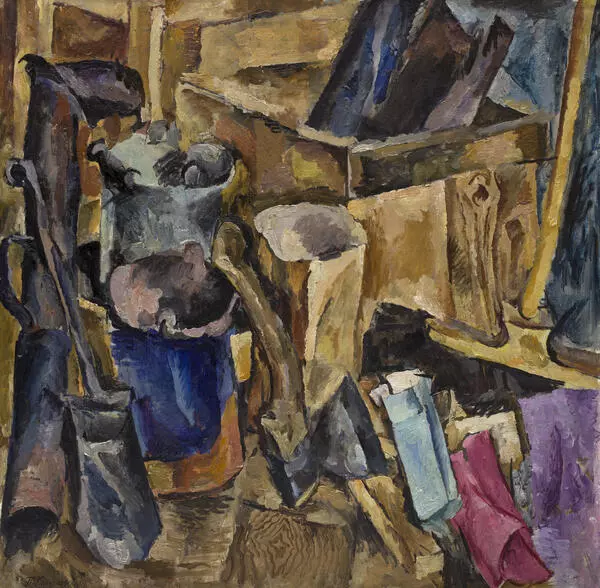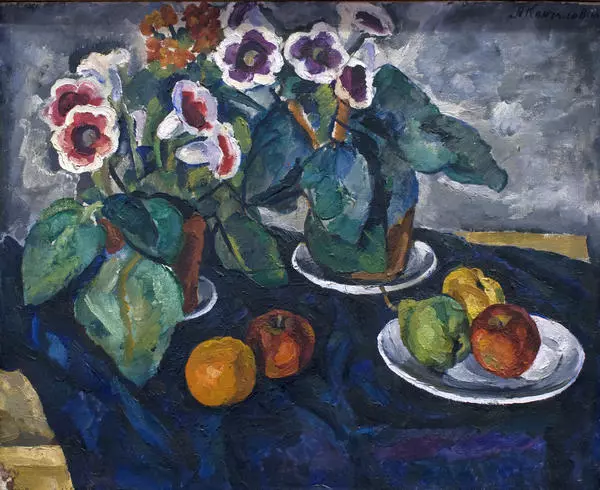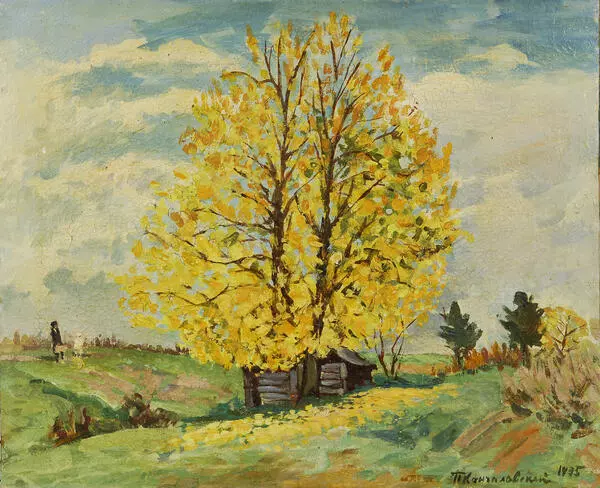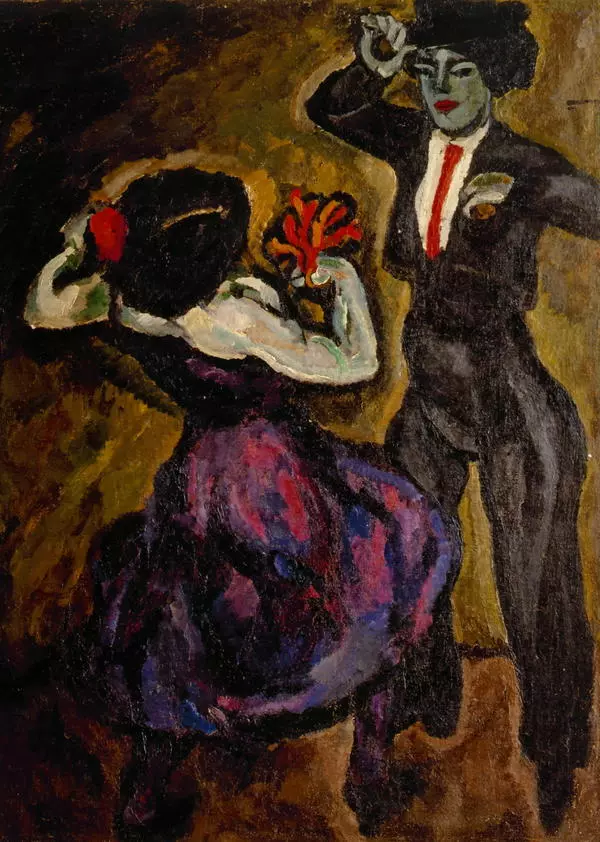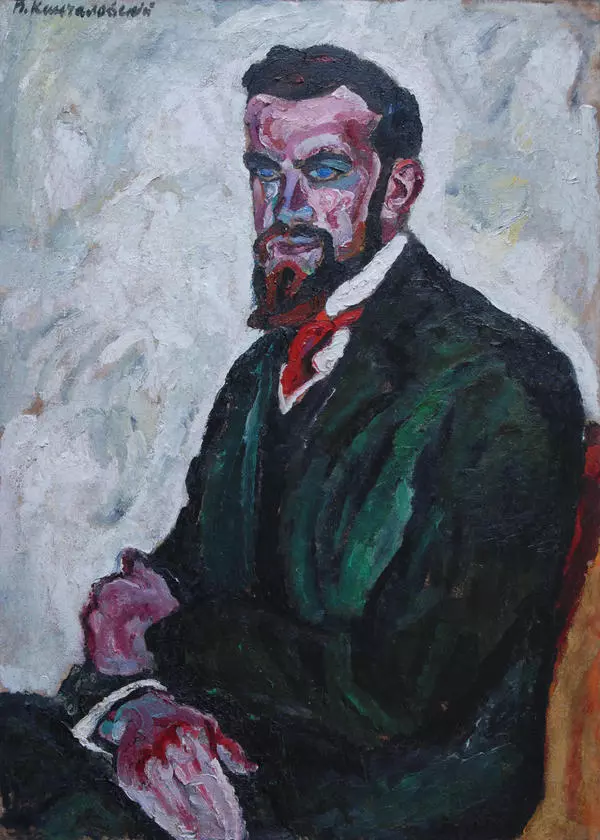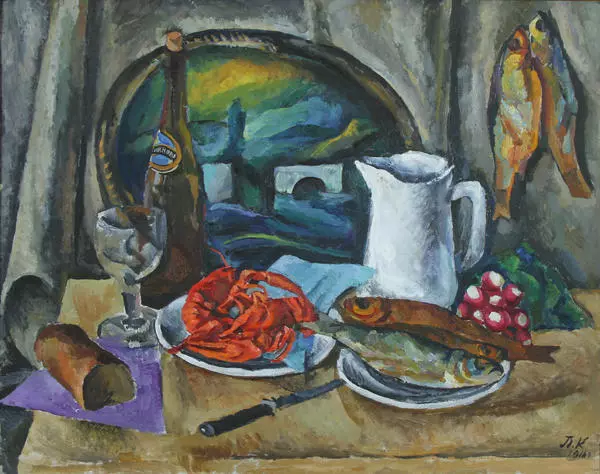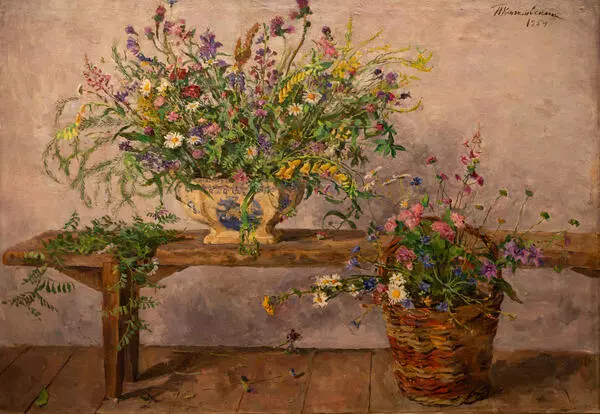In his creative life, Pyotr KonchalOvsky went from being enthusiastic about Paul CézAnne and French Impressionists to adopting a more realistic approach to artworks. The latter is embodied in ‘Lilac and canvas stretcher’ which chronologically refers to the mature, most fruitful period in the work of the artist.
Konchalovsky would often draw inspiration from opposing painting trends and movements. The beginning of the artist’s quest coincided with the advent and development of avant-garde movements in Russia. At that time he was one of the founders and members of the Jack of Diamonds artist group. During this period, Konchalovsky noticeably simplified and generalized the figures, bringing his paintings closer to primitivism and at the same time following the principles of Fauvist art.
Later, in the 1920s, the artist studied the specifics of Paul Cézanne’s technique. In his artworks, the French artist sought to combine the principles of impressionism with traditional classicism art. Konchalovsky did just the same. In his late works, he managed to harmoniously combine avant-garde techniques with the principles of Western European painting and the Russian realistic school of the 19th century. It was reflected in ‘Lilac and canvas stretcher.’
With this painting, Konchalovsky proclaims the arrival of spring — festive and victorious. It is imbued with fresh, rich and spicy aromas of the first greenery and flowers. The lush branches still keep the morning dew in their depths. The log walls of the country terrace, rough table boards, clean canvas instead of draperies, unobtrusive glass vases — nothing should distract the viewer from the lushness and luxury of lilacs.
However, the artist does not delineate each flower or petal, as did the realists of the last century, and boldly uses dense pastose strokes of lilac, pink, blue and emerald-green. Here again, one should remember the principles developed by the Impressionists. A few steps away from the painting and these large strokes merge together, turning into heavy bunches of lilac.
Konchalovsky would often draw inspiration from opposing painting trends and movements. The beginning of the artist’s quest coincided with the advent and development of avant-garde movements in Russia. At that time he was one of the founders and members of the Jack of Diamonds artist group. During this period, Konchalovsky noticeably simplified and generalized the figures, bringing his paintings closer to primitivism and at the same time following the principles of Fauvist art.
Later, in the 1920s, the artist studied the specifics of Paul Cézanne’s technique. In his artworks, the French artist sought to combine the principles of impressionism with traditional classicism art. Konchalovsky did just the same. In his late works, he managed to harmoniously combine avant-garde techniques with the principles of Western European painting and the Russian realistic school of the 19th century. It was reflected in ‘Lilac and canvas stretcher.’
With this painting, Konchalovsky proclaims the arrival of spring — festive and victorious. It is imbued with fresh, rich and spicy aromas of the first greenery and flowers. The lush branches still keep the morning dew in their depths. The log walls of the country terrace, rough table boards, clean canvas instead of draperies, unobtrusive glass vases — nothing should distract the viewer from the lushness and luxury of lilacs.
However, the artist does not delineate each flower or petal, as did the realists of the last century, and boldly uses dense pastose strokes of lilac, pink, blue and emerald-green. Here again, one should remember the principles developed by the Impressionists. A few steps away from the painting and these large strokes merge together, turning into heavy bunches of lilac.
